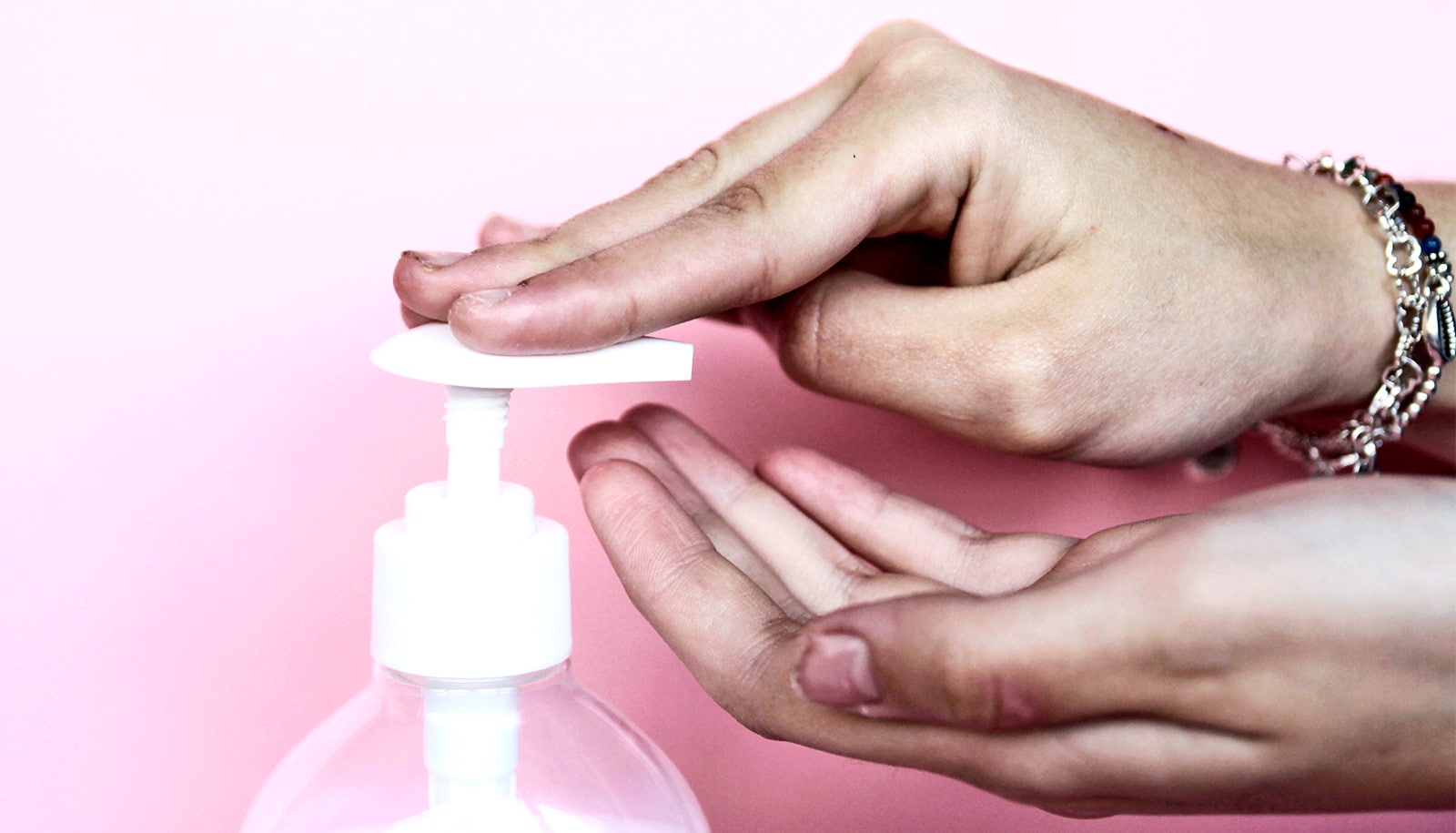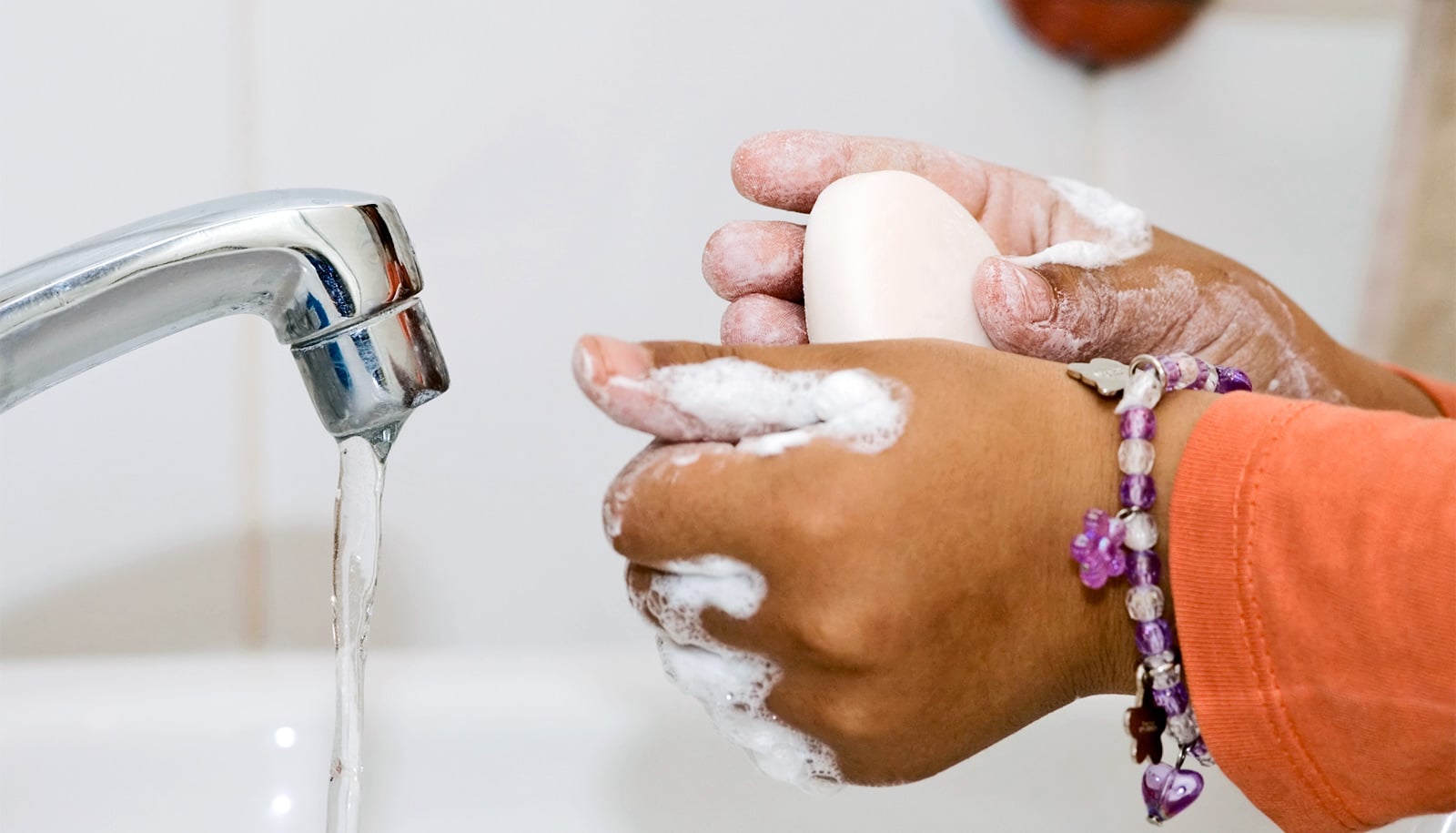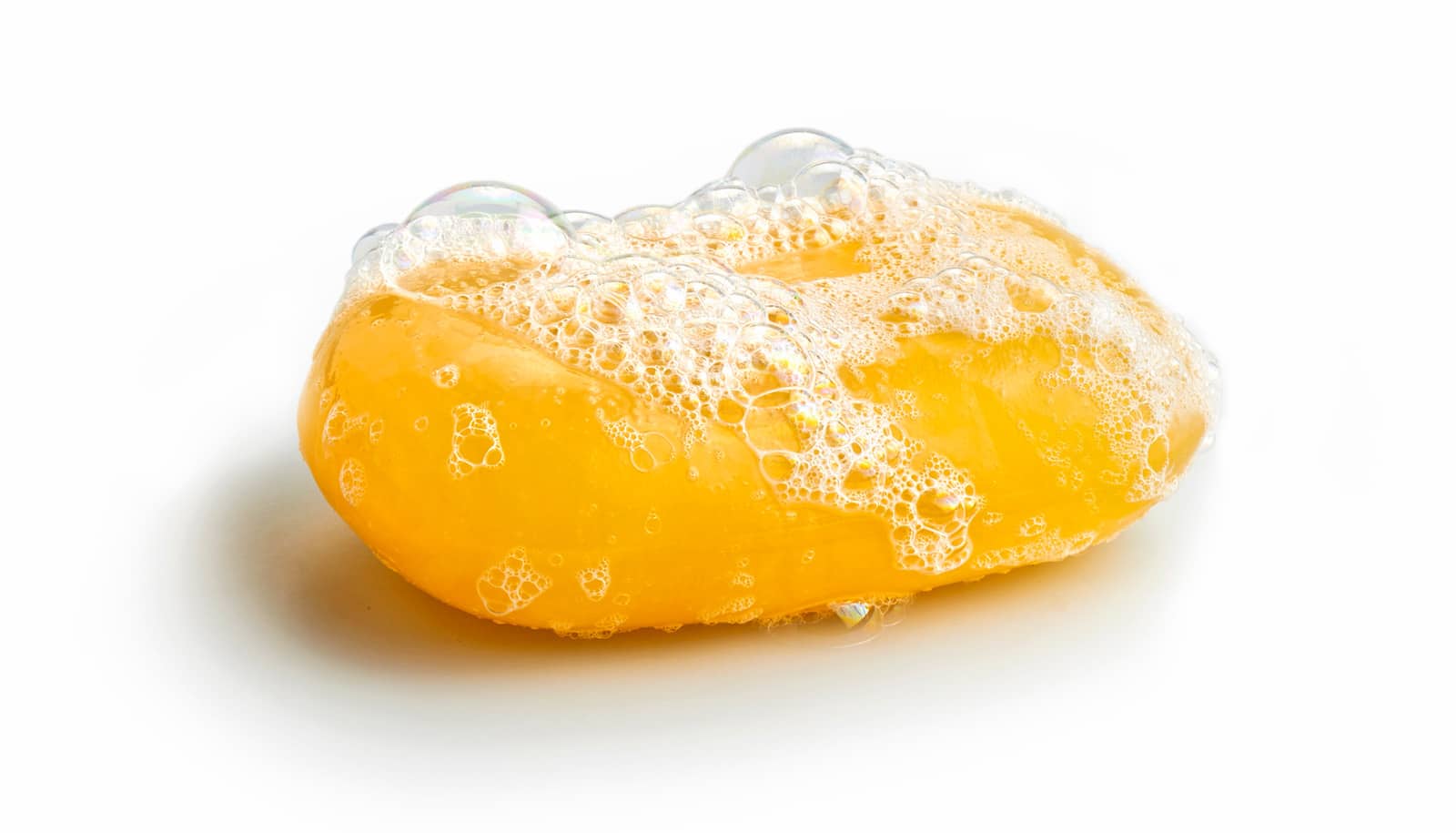Washing your hands with plain soap and water can destroy the coronavirus that causes COVID-19. But how does soap work to keep you healthy?
“There are so many unknowns about this pandemic that are driving fear and leading to irrational actions, like panic-buying of toilet paper,” says Bill Wuest, an associate professor in the chemistry department at Emory University who researches disinfectants.
“…washing your hands properly and often with soap and water can help reduce your chances of getting infected with many pathogens…”
“It’s important to focus on what we do know—washing your hands properly and often with soap and water can help reduce your chances of getting infected with many pathogens and for spreading them to others.”
Soap and water work through the hydrophobic effect, a basic chemistry concept that explains why oil and water don’t mix. The effect drives protein folding, a process that alters the structures of amino acids and allows them to perform different functions within a cell.
“I usually use the example of protein folding to teach the hydrophobic effect to chemistry undergraduates,” Wuest says. “But now I realize that soap provides a much more relatable example.”
Soap molecules have hydrophilic heads—meaning they cling to water molecules—and tails that are hydrophobic—which means “water-fearing.” When immersed in water, the soap molecules form into tiny balls, called micelles, with their hydrophobic tails pointed inwards. While the soap molecule tails want to avoid water, they are attracted to oils and fats.
Many bacteria and viruses, including coronaviruses, are encased in a fatty acid membrane. In the most simplistic terms, the soap molecule tails poke into these bilayer membranes, breaking them apart, and destroying the pathogens.
Warmer temperatures boost the hydrophobic effect, and may help hand soap to lather and remove grime or microbes sticking to your skin, just as hot water and soap helps remove grease from a kitchen pan. Wuest recommends lathering your hands in water that’s warm to the touch. Evidence suggests it’s best to spend at least 20 seconds washing your hands to remove more germs, he adds.
Wuest plans to use the soap and water example in his Chem 202 classroom from now on. Although washing with soap and water may sound too basic a topic for college students, Wuest now realizes that it is not.
“This pandemic has changed the way I think about teaching,” he says. “Even now, I don’t think most people spend a full 20 seconds washing their hands, but maybe if they understood the chemistry of soap and water it would make them more conscious of the need to do so.”
Hand washing is important to reduce illnesses and deaths for many diseases, including seasonal influenza, he notes.
If soap and water aren’t available, hand sanitizer containing at least 60% alcohol is also effective at breaking up the membranes surrounding coronaviruses and bacteria. You should rub it thoroughly into your hands until all the liquid evaporates, Wuest says.
For everyday use in a non-medical setting, Wuest urges people to choose soaps and hand sanitizers that do not contain antibacterial ingredients. Proper use of plain soap and water or an alcohol-based sanitizer product is key, he stresses.
“I worry that there could be a spike in antibacterial resistance in a few years if too many people start using antibacterial products to clean their hands,” he says.
Source: Emory University



